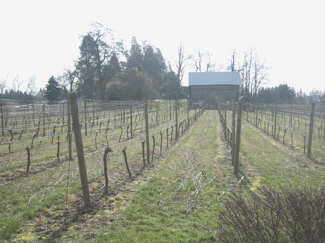 If you prefer a newer home, but also want a big back yard, then you will find yourself in a quandary. There are new houses, and there are large lots, but they just don’t seem to be found together. What’s up with that?
If you prefer a newer home, but also want a big back yard, then you will find yourself in a quandary. There are new houses, and there are large lots, but they just don’t seem to be found together. What’s up with that?
Those little lots are a direct result of Oregon’s land use laws. In the 1970’s a statewide commission was formed, the Land Conservation and Development Commission, also known as LCDC. The purpose of this commission was to develop a plan to conserve farm and forest land and keep Oregon from experiencing urban sprawl. Oregon’s greatest fear, at that time, was becoming California. And California was full of urban sprawl. There was talk that some day Portland would stretch south to Salem and there’d be no open fields: just miles and miles of strip malls and suburbs. The LCDC developed the statewide Urban Growth Boundary. This boundary is basically a line that is drawn around all urban areas. Inside the line the urban community is allowed to develop with residential housing and all of its supporting infrastructure. Outside of the boundary is mandated to be preserved for farm and forest use. This forces the infill of the property inside of the urban growth boundary. Every single city and town in the State of Oregon has an urban growth boundary. Compounding the issue is the 2040 Plan. This is a plan, developed in 1992, that projects the population growth of the state to the year 2040 and requires municipal planning departments to control new construction to accommodate those projected population needs.
So the State of Oregon has limited the supply of residential land and at the same time required planning to allow for future growth. Thus, the requirement that new homes be placed onto smaller lots. Even if a builder wants to build houses on larger lots, the planning process will likely force him to build on small lots, or his plans will not be approved.
There has been some back lash to the strict land use laws in the form of two recent ballot measures. Both ballot measures were designed to benefit people who had owned property since before the land use laws went into effect in the 1970’s. Ballot Measure 37 was passed in 2004. It allowed people who have owned property since the 1970’s to either develop the land as they saw fit or be reimbursed by the government for the loss of value that they had experienced from the land use laws. Ballot Measure 49 was passed in 2007. It modified measure 37 to allow for development of up to 4 home sites easily and more than 4 home sites to be a much harder process.
Oregon is the champion state for land use planning. It’s a highly charged subject that can stimulate rather heated conversation. But this is Oregon and that’s just how it’s done here. And those big new houses on smaller lots are what we often find as a result.
On a side note, there just isn’t much land left in Lake Oswego for the building of new homes. This has got the builders buying up old homes and tearing them down to build new houses on the old lots. In this case, the lots are very often not only large but in beautiful, established neighborhoods. And, yes, you do see quite a bit of this in Lake Oswego.
